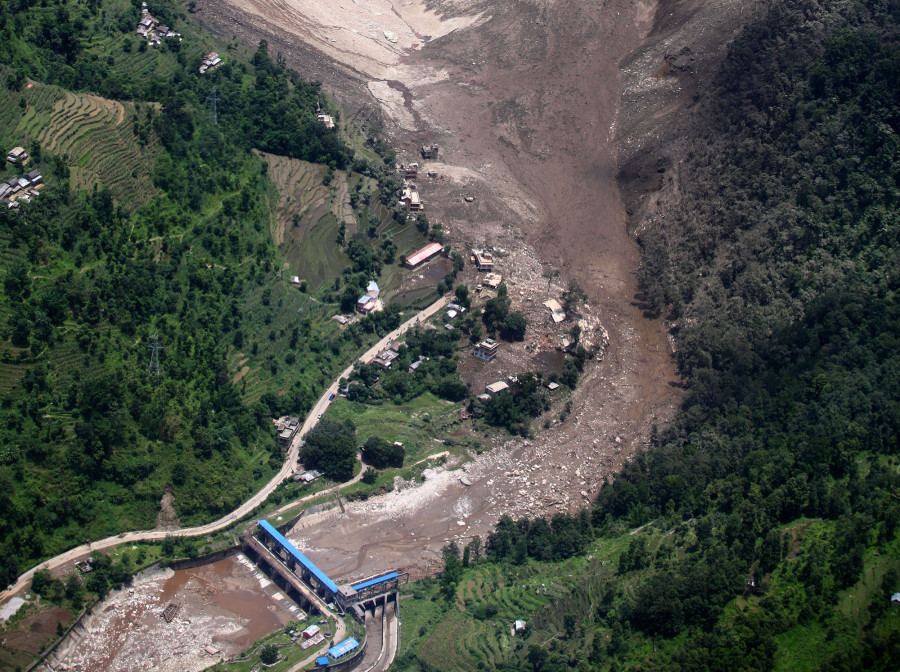Columns
All eyes on COP27
The climate change conference must compel large emitters to take radical steps to cut emissions.
Madhukar Upadhya
Adopted in 2015, the Paris Agreement was the culmination of the high hopes of limiting global warming preferably to 1.5 degrees Celsius compared to pre-industrial levels in order to avert devastating climate impacts. It paved the way for every country to commit to cutting emissions through their individual Nationally Determined Contributions. The binding agreement called for the establishment of mechanisms for countries to report on the progress they made in meeting their goals of emissions reductions.
Around the same time, intensifying extreme weather events, a direct consequence of and further exacerbated by climate change, began unfolding on a global scale; a mere coincidence, many prematurely concluded. For example, in August of 2017, three separate but connected incidents took place: Hurricane Harvey in the United States, the Kerala floods in India, the worst in over a century, and massive floods covering the entire southern plains of the Nepal Tarai. These three disasters showed some atypical patterns; instead of advancing normally on their regular courses, the cloud systems in all three cases hovered over specific areas, pouring record rains for days, while the adjoining areas received very little rain. It was worrying, to say the least!
In 2018, the Intergovernmental Panel on Climate Change (IPCC) of the United Nations published a report suggesting that severe climate impacts could be avoided by limiting warming to 1.5 degrees Celsius, but the time to act was closing rapidly. Ramped-up rhetoric relayed the urgent need to cut emissions quickly. However, unfolding weather events indicated that the expected climate change had already evolved into a climate crisis, making it harder especially for the poor and vulnerable. Therefore, developing countries have been demanding compensation for the "loss and damage" they suffer due to the climate crisis.
Unfolding weather events
Seven years after the Paris Agreement, we saw extreme weather across the world. June 2022 saw the warmest temperatures since record-keeping began in the late 1850s. Exceptional heat waves swept through Europe, America and China in July. Temperatures in Europe reached as high as 40 degrees Celsius which was unheard of. Severe droughts have hit many places, from large swathes of the continental US to the Horn of Africa and beyond. More than 100 municipalities in France were left with a shortage of drinking water. Wild fires destroyed millions of hectares of forests across Europe and America.
Places such as the United Arab Emirates, Iran, Yemen, Baluchistan (Pakistan) and Rajasthan (India), all located in drier climate zones, suffered massive floods this year. In the US, Death Valley, known for receiving less than 50 mm of annual rain, witnessed flash floods, while floods inundated settlements from Uganda to Kentucky and Seoul. Perhaps even more alarming, soot pollution is accelerating climate-driven melting of the Antarctic snow. And heavy rain in north-eastern Siberia also points to the growing impacts of climate change.
Across the Indian sub-continent, the monsoon trough largely guides rainfall during the monsoon. When the trough is over central India, most rain occurs there; but when it shifts to the Himalayan foothills, the northern part of the sub-continent receives rain. This year, that understanding was shaken. Central India received torrential rain when the trough hovered there, but when it moved north, only some parts, such as Uttarakhanda, received heavy rain. The rest of the central and eastern Himalaya received moderate rain barring some localised heavy rain. As a result, many rice farmers in Nepal couldn't plant rice even until the end of July. This could very well lead to a risk of cascading effects ranging from lower production, food shortages and increase in migrant workers to economic slowdown and conflict. Many climate scientists believe that we're already experiencing the extreme events we were warned would be the norm in the 2050s.
There's growing consensus that not much time is left to bring about meaningful reductions in greenhouse gas emissions. Net zero to halt global warming is still within our grasp if we work swiftly by concentrating our actions around the climate crisis. However, this isn't where the world is headed. Carbon concentration has jumped from 399.4 ppm in 2015 to 421 ppm in 2022.
An increasing number of experts and activists have started to become vocal about how important it is to safeguard the ecosystem and biodiversity rather than prioritising fossil-fuel based economic growth. There's greater understanding that the earth cannot withstand the exploitation of natural resources any further. The weather events we've witnessed globally are likely to be more frequent and intense in the days ahead. Soil degradation, loss of biodiversity and extreme weather events have amplified the rate at which nature’s capacity to sustain life support systems is plummeting. If this isn't alarming, what is?
While big fossil fuel companies continue to expand their business, frustration over the rhetoric is growing. A growing number of people, from bankers to fashion editors, from oil traders to fuel industry consultants, experts and Google engineers are leaving their high-paying jobs to take up careers in pursuit of a renewable future. This was also echoed by the United Nations chief António Guterres who, while addressing a group of fresh graduates, suggested that they not take up careers with the climate wreckers, the fossil fuel extractors.
Real paradox
Developing countries will prioritise loss and damage at COP27 adhering to the principle of "polluter pays". The reparations will be for the losses incurred, primarily to rebuild lives and livelihoods after climate-induced disasters. The paradox is that efforts to reduce greenhouse gas emissions and limit global temperature below 1.5 degrees Celsius should go hand in hand; vulnerable countries' single-minded focus on loss and damage shifts attention from the giant, CO2-emitting elephants in the room. Since these large emitters haven’t demonstrated great enthusiasm and drive in cutting emissions as rapidly as required, developing countries' increased focus on loss and damage is likely to dilute the issue further. Thus, we mustn't be surprised when emissions don't fall as needed to avert the climate emergency. As far as paying for loss and damage is concerned, we need to remember that despite their promises, developed countries haven't committed new and additional funds to developing countries to help them deal with climate change. There's a good chance that the issue of who pays for climate impacts may once again be recognised but not committed to.
The climate crisis doesn't recognise political boundaries, nor does it care about geographical location or economic might; its devastating impacts won't discriminate. However, the capacity of nations to withstand or recover from these impacts differs greatly. Therefore, COP27 must compel large emitters to take radical steps to cut emissions and ensure reparations for vulnerable countries for their losses. Failing to do so would mean hurtling towards complete climate catastrophe. Pedal to the floor, full speed ahead.




 12.12°C Kathmandu
12.12°C Kathmandu















